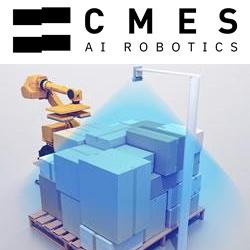AUVSI 2015 - Robotics Poised to Revolutionize Manufacturing, Daily Life, Speaker Says
Automation will lead to other revolutions in electronic commerce.
The world is no longer flat, says Henrik I. Christensen, the closing keynote speaker at AUVSIs Unmanned Systems 2015.
Christensen, director of Georgia Techs Institute for Robotics and Intelligent Machines, said economist Thomas Friedmans theory that low wages and cheap transportation means that products can be built anywhere is no longer holding true.
Wages are rising in China, and revolutions in robotic manufacturing mean its becoming more economical to build products in expensive places like the United States and Europe again.
Computer manufacturer Lenovo recently built a factory in North Carolina, Apple built one in Texas and electric car manufacturer Tesla designed its product to be built in California, where labor costs are high, Christensen said.
"With advanced automation, we can do this," he said.
A company called Symbotic recently built a 10-story warehouse in Boston stuffed with robots, some of which are moving at speeds up to 30 mph, which opens up new levels of efficiency.
"This allows me to build warehouses in places like Atlanta. This allows me to do one-hour services," he said. "I can order a new battery for my laptop and in one hour I can have it delivered, even in densely populated places like Atlanta."
Automation will lead to other revolutions in electronic commerce. Christensen said Google is already offering a service in San Francisco where customers can order a product from a local store and a Google driver will pick it up an deliver it for free.
Eventually, with self-driving cars, no human would even be involved in that supply chain, he said.
Google isnt offering this service for free. More people are simply ordering things directly from Amazon without researching them on Google, he said, so the search giant needs to get into the fast-growing electronic commerce game to compete with Amazon and foreign competitors, such as Chinese giant Alibaba.
"The e-commerce space grows 40 percent a year," Christensen said. "If youre going to invest money, I would suggest e-commerce."
Autonomous driving - and eventually even flying - will be a major new growth area, he said.
His students at Georgia Tech arent interested in owning a car. If they want to pick up furniture at IKEA, they would prefer to rent a truck. If they want to impress a date, they want to rent a Ferrari.
"My own prediction for autonomous driving is, kids born today will never drive a car," he said.
Autonomous driving will first take hold off road, on farms, at ports and in mining operations, where safety is less of a concern. But eventually it will make its way to highways, with self-driving trucks and cars.
Europe will probably go first, he said, due to the threat of litigation in the United States, so "were going to use Europe as a test range for a few years. Then we will start launching" in the U.S.
Three-dimensional printing will also enter the game.
"You will have an unmanned UPS truck driving up to your house and will 3-D print whatever you ordered in the back of the truck and give it to you," he said.
Christensen edited a multi-university roadmap of the future of robotics in 2013 and said a new report is underway, due at the end of 2016.
He noted that many previous technological projections have been quite wrong, such as when the CEO of IBM predicted that the worldwide market for computers would be four and Compaq predicted that no one would ever want a computer in their home.
"We have only sort of scratched the first 1 percent where the applications are, or less than that. … I would say weve barely begun the future," he said.
Featured Product

CMES - AI-Powered 3D Robot Vision
Powered by AI, CMES Robotics enables 3D vision for factory robots. CMES AI vision software enables robots to recognize unstructured, flexible, or deformed objects, pick them up, and loading and unloading. CMES Vision software has been deployed worldwide for random palletization and depalletization along with void filling applications. CMES Robotics automates your warehouse, logistics, and supply chain. For more information, please visit: cmesrobotics.com or email info@cmesrobotics.com.
